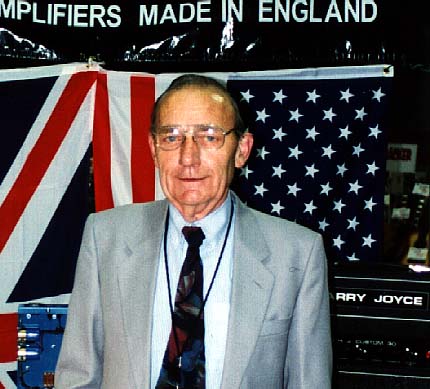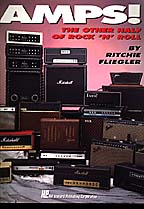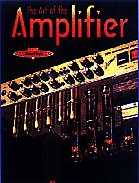
HOME |
SPECIFICATIONS
| MILITARY-SPEC | HARRY WHO? | RAVES
|

HARRY JOYCE
Harry built electronics
for over 50 years. He was taught military-spec
construction as a boy by a couple of Americans during WWII. He
introduced
that method to guitar amplifiers when he was contracted to build HIWATT
amps for Dave Reeves in the 60's and 70's till Reeves' untimely death
in
1981.
For the next 20
years
Harry and company built all sorts of electronic apparatus for the
British
Ministry of Defense. In 1993 Harry was urged to end his retirement and
once again lend his skills to the world of guitar amplifiers.
Starting where he
left
off, he made many improvements to the Mullard-circuit based amps he had
made two decades ago; resolving known service issues, adding an extra
gain
stage, improving the tonal palette, redesigning the transformers for
improved
sound and efficiency, changing the layout for improved signal to noise
ratio, and implementing a useful effects loop. The results are the HJ
CUSTOM
30, 50, and 100 watt amps.
HARRY JOYCE
In Print
Two great books about the subject of
amplifiers
have included some kind words about HARRY JOYCE.
Both
are published by the Hal Leonard Co and are available wherever cool
books
about amps are sold!
Quotes appear as a
courtesy
of the publisher. All rights reserved.

AMPS! THE OTHER HALF
OF ROCK AND ROLL provides an excellent overview of what you
plug a guitar into as interpreted by several different makers. It
states:
HIWATT
Dave Reeves was a wirer at the Sound
City Factory. He saw what he felt were deficiencies in the basic Sound
City design and set out to create his own circuit that delivered the
sound
he heard in his head. After a period of trial and error Dave felt he
found it
and decided to start his own company, Hiwatt. In need of people to
start
production, he looked in the phone book under wiring and found the name
Harry
Joyce.
Harry was a certified government
wirer
– this is not a joke; all governments have contractors that bid on any
number of jobs from making toilets to battleships, and they must meet
very
stringent guidelines. Harry was more than willing to take on Dave
Reeves’
project, but in the name of quality control he insisted that he would
not
make more than 40 amps a month. This was all right at the start, but as
HIWATT became more popular it became a problem. Dave tried every method
possible to convince Harry that an increase in production would be a
good
thing and wouldn't affect quality, but Harry was unrelenting.
Military Spec
There are physically many ways to
make
an amp. Typically, consumer electronics are not as ruggedly built as
those
used for industry and military applications. Besides being extremely
sturdy,
electronics built to military specifications ("military spec," or just
"mil spec") are neat and clean beyond comprehension. Every component in
a mil spec unit is clearly labeled, and all wires are bent at right
angles
and tied off, including the leads coming off of resistors and
capacitors.
This makes replacement or repair under adverse field conditions easier
to accomplish. In mil spec construction, the heavy-duty quality
inherent
in tube amp construction is carried out to the highest degree. The
difference
in sound between two identical circuits assembled in the consumer and
military
fashion would be negligible; but their ability to withstand abuse is
quite
different. All early Hiwatts are built to military specification –
surely
at Harry Joyce's insistence. When I showed mine to a service manager at
Marshall, he couldn't believe his eyes. He just kept staring at it like
an artist looks at a beautiful flower.
- Ritchie Fliegler



